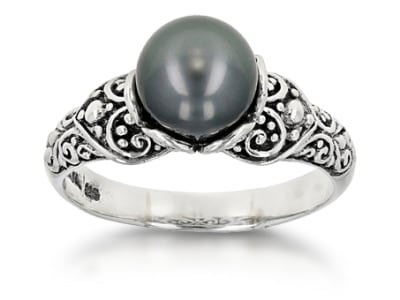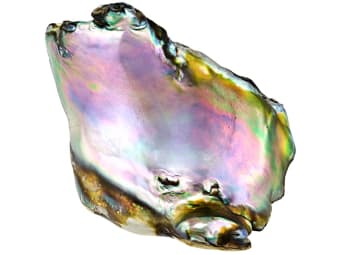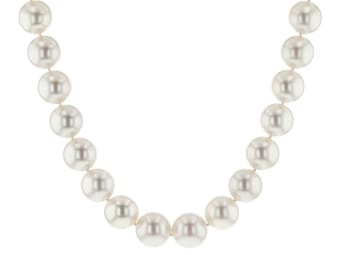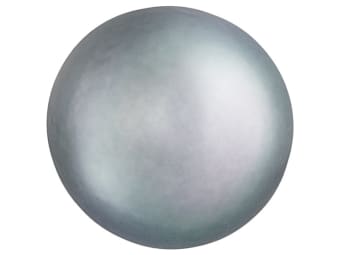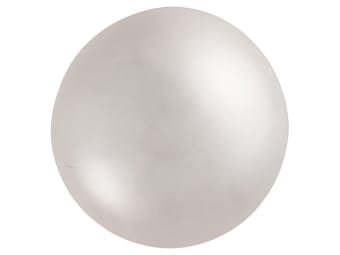Akoya, Sea of Cortez, South Sea, and Tahitian Pearls are all cultured from saltwater oysters and are the most notable varieties of saltwater pearls. These pearls are harvested from saltwater marine environments and are more valuable than the freshwater pearl varieties.
General Information
LWUV: Variable
Saltwater Pearl Colors
-
 Black
Black -
 Blue
Blue -
 Gray
Gray -
 Multi-color
Multi-color -
 White
White -
 Yellow
Yellow
Alternate Names
South Sea Pearl, Tahitian Pearl, Akoya Pearl, Sea of Cortez Pearl, Seed Pearl, Abalone Pearl
Countries of Origin
Myanmar; Viet Nam; Korea (the Republic of); Unknown; China; Japan; Philippines; Italy; Mexico; Australia; French Polynesia; Indonesia
Care
Avoid cosmetics, perfumes, hairsprays, heat and household chemicals.
Species/Variety
Abalone Pearl
There are 96 known varieties of abalone that will produce natural pearls. The chances of finding a high-quality abalone pearl are 1 in 10 million. Pearls can be rounded or free form, but tooth shape is the most commonly found form. The pearls can come in white, cream, black, gray, blue, purple, pink, yellow, and gold and have been reported to reach 500cts. Pearls typically have blemishes and can be hollow. California is the largest producer of abalone pearls. The Californian abalone varieties are the California Red or Californian Abalone (Haliotis rufescens) which is the largest variety of abalone shell from California, and it produces the largest and most beautiful pearls. Other varieties are the Black Abalone (Haliotis cracerodii) which is the smallest, the Pink Abalone (Haliotis corrugata) which is the most abundant, White Abalone (Haliotis assimilis), and the Green Abalone (Haliotis fulgens) which are very colorful. Australia has the Black lipped abalone (Haliotis ruber) and the green lipped abalone (Haliotis laevigata). Japan has the Disc abalone (Haliotis discus), the giant abalone (Haliotis gigantea), and the Japanese abalone (Haliotis aquatilis) which produce pearls known as “Awabi pearls”. Korea and China also have the Disc abalone, but they are called “jonbok” pearls in Korea and “Fuhyu pearls” in China. Culturing abalone pearls have been attempted but most success has been achieved in creating “mabe” or blister pearls.
South Sea Pearl
The term “South Sea cultured pearl” was originally designated for pearls cultivated in the waters south of Japan. The first cultivation of South Sea Pearls began in the mid 1950’s. The pearls are cultured from the Pinctada maxima or Pinctada margaritifera and typically exceed 10mm.
Tahitian Pearl
The cultivation of Cultured Tahitian Pearls started in the 1960’s using the Pinctada margaritifera in the waters surrounding Tahiti and French Polynesia. The pearls are light gray, silver, or black and are typically 8 to 17mm in size.
Akoya Pearl
Akoya pearls are the saltwater pearls produced by the Akoya oyster, <i>Pinctada fucata martensii</i> and <i>Pinctada fucata chemnitzii</i>. Akoya pearls have an intense luster and appear to have an inner “glow” due to their great nacre thickness. The pearls typically range between 2 to 11mm.
Cortez Pearl
Cortez pearls come from the Gulf of California also known as the “Sea of Cortez”. The pearls are harvested from the Panamic Black-Lipped Oyster and the Rainbow-Lipped mollusk.
